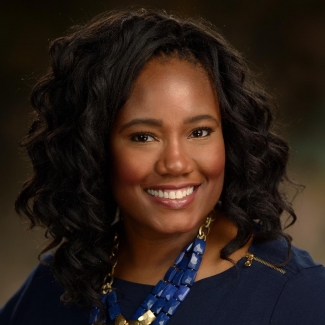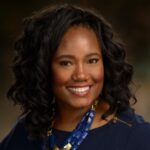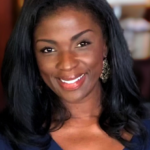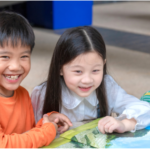The Overidentification of Asian Children with Autism: The Danger of the “One Story”
Hey, everyone! Let’s dive into a topic that has caught my attention—the over-identification of Asian children with autism. If you work at all in special education, you may be familiar with the issue of over-identification among minor groups. It’s been around for a while now so let’s take a look at it through the lens of children from the Asian community. Let’s talk about it.
The problem with what I call the “one story” is that it oversimplifies us. It erases the diversity that exists within different racial groups, lumping them all together and defining them by a simple narrative. This becomes especially concerning when we look at how autism is diagnosed in Asian children. The overrepresentation of Asian children with Autism is an example of the “one story” gone wrong, which can have long-lasting consequences—it’s a systemic issue, and it could have long-lasting consequences for these kids’ futures.
The fact is, students with disabilities, in general, tend to have lower peer interactions and struggle with academic and post-secondary outcomes. When you add cultural misunderstandings into the mix, the situation gets even more complicated. The question is, as Speech-Language Pathologists (SLPs), how can we help solve this problem and be a part of the solution? How do we make sure we’re providing accurate assessments and appropriate care for all children, no matter their cultural background?
Understanding the Demographics: Why “Asian” Isn’t One-Size-Fits-All
Let’s start by looking at what we mean when we talk about “Asian.” The U.S. Census Bureau defines Asians as people who have origins in East Asia, Southeast Asia, or the Indian subcontinent. That includes countries like China, India, Japan, Korea, and many more. So when we use the term “Asian American,” we’re talking about a huge, diverse group. In fact, Chinese, Indian, Filipino, and Korean communities make up 85% of Asian Americans, with the other 15% covering a wide range of ethnicities (Budiman & Ruiz, 2021).
Here’s the thing—lumping all these different groups into one category completely ignores the unique cultural practices, dialects, socioeconomic backgrounds, and histories of each community. So when we see that Asian Americans are overrepresented in special education for autism—around 25% of Asians under the IDEA (Individuals with Disabilities Education Act) are receiving services under the autism category (Budiman et al., 2021)—we have to ask: Is this a reflection of true need, or is it a case of misdiagnosis based on cultural misunderstanding?
The Role of Family Culture: It’s All About Perspective
As we know, culture has a huge impact on how we communicate—both verbally and non-verbally. For example, in some Asian cultures, kids who aren’t super outgoing or don’t make a lot of eye contact might be seen as shy or respectful, not as socially withdrawn or autistic. A Korean family might think that a child’s repetitive finger movements near the face are just a quirky habit, while a parent from another background might interpret them as a red flag for autism. And sensitivity to noise? In some cultures, being sensitive to noise is just seen as having “good hearing,” not a symptom of something bigger.
These cultural differences can seriously affect how families respond to a suspected autism diagnosis. In some cultures, autism is still a taboo topic—stigmatized to the point that families may avoid talking about it altogether. That’s where we, as clinicians, need to be more aware and open-minded. We have to make sure we’re not jumping to conclusions based on what we think is “typical.” Every child’s experience is different, and understanding the family’s cultural context is key to getting the diagnosis right.
The Challenge for Clinicians: How Do We Avoid Bias?
This is where things get tricky for us as SLPs. According to IDEA (300.304), assessments should be non-discriminatory, meaning they should be fair for kids of all races and cultures. But here’s the challenge—most standardized assessments were normed on middle-class white families, and they have a very Western view of what’s “typical.” These tools often don’t account for the cultural differences that exist among children from diverse backgrounds.
Plus, autism is a complex diagnosis and there’s no one-size-fits-all way to measure it. So, when we’re evaluating a child from a different cultural background, we have to use additional information. It’s not just about ticking boxes on a checklist; it’s about taking the time to understand the child’s unique experiences, language skills, and social behaviors.
That means, as clinicians, we need to become more educated about cultural biases and ensure that we’re using assessments that are appropriate for each individual child. It also means we need to be careful about our own biases and make sure we’re not applying a narrow lens to a very diverse group of kids.
What Needs to Change?
If we’re going to make a difference, we need to approach this problem with a mindset of cultural awareness. We can’t just rely on standardized tests that might not be appropriate for all kids. Instead, we need to take a more holistic approach, incorporating informal assessments, speaking with families, using interpreters when needed, and consulting resources like the Asian Pacific Islander Speech-Language-Hearing Caucus.
At the end of the day, we need to put the child and their culture at the center of the assessment process. By doing that, we can reduce the chances of misdiagnosing children from Asian backgrounds and help ensure they get the care they truly need.
The Bottom Line: Time for Change
The overidentification of Asian children with autism is a serious issue, but it’s one we can address—if we’re willing to take a hard look at our practices and make changes where necessary. By becoming more culturally aware and responsive, we can help reduce the misdiagnosis of autism and provide better, more accurate care for all kids, regardless of their cultural background.
For those of us in the field, it’s time to step up, get educated, and make sure we’re doing the best for every child that walks through our doors. Because, as we know, the more accurate and supportive our approach, the better the outcomes for the children we serve.









